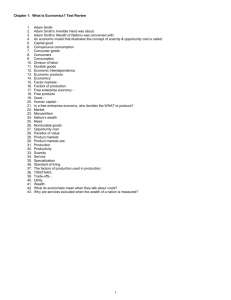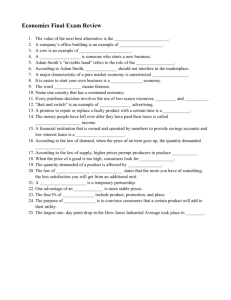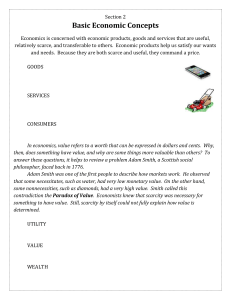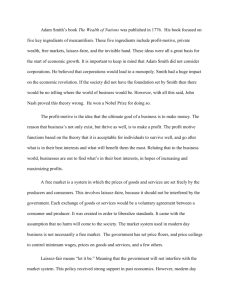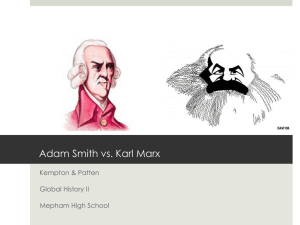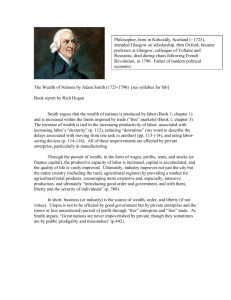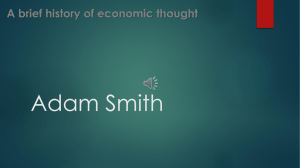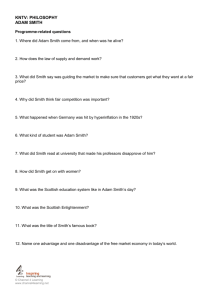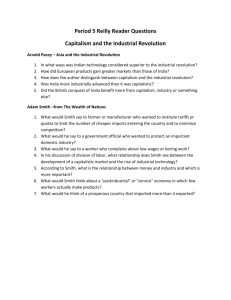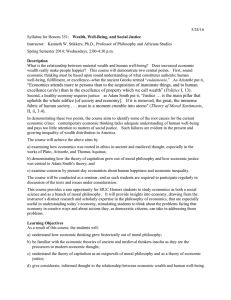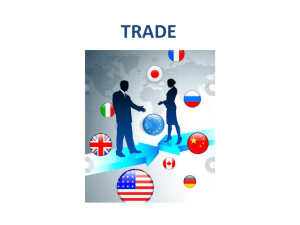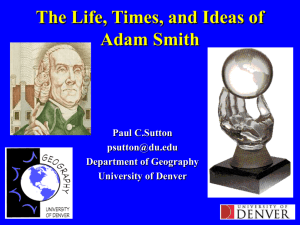Robert Heilbroner's The Worldly Philosophers Summary of Chapter
advertisement
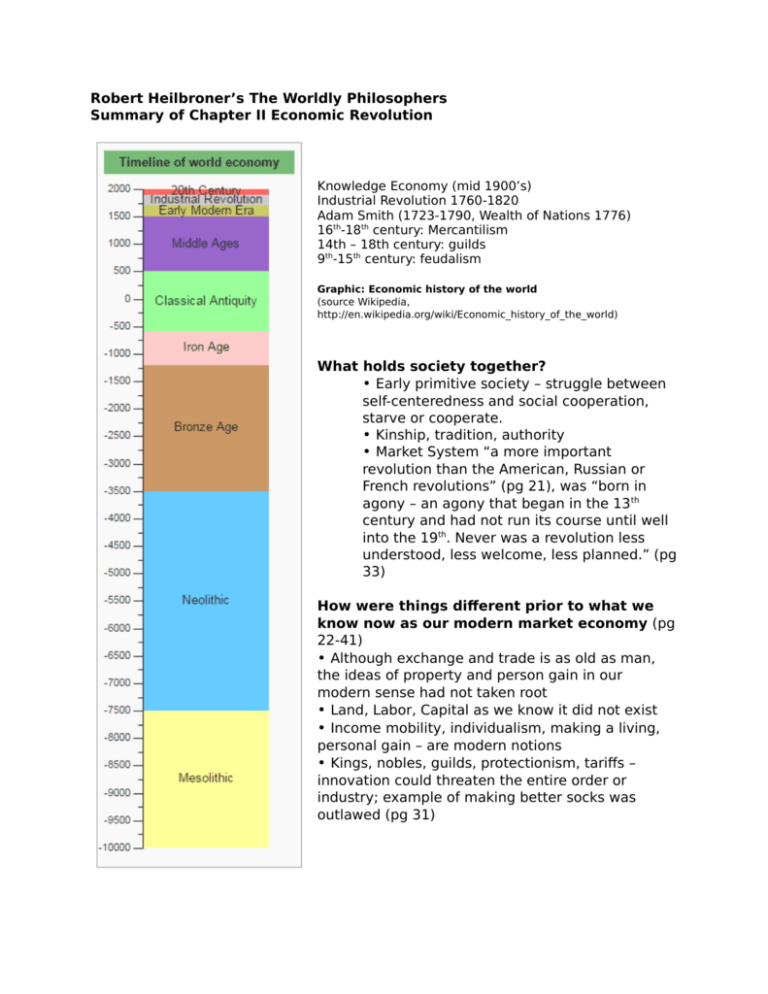
Robert Heilbroner’s The Worldly Philosophers Summary of Chapter II Economic Revolution Knowledge Economy (mid 1900’s) Industrial Revolution 1760-1820 Adam Smith (1723-1790, Wealth of Nations 1776) 16th-18th century: Mercantilism 14th – 18th century: guilds 9th-15th century: feudalism Graphic: Economic history of the world (source Wikipedia, http://en.wikipedia.org/wiki/Economic_history_of_the_world) What holds society together? • Early primitive society – struggle between self-centeredness and social cooperation, starve or cooperate. • Kinship, tradition, authority • Market System “a more important revolution than the American, Russian or French revolutions” (pg 21), was “born in agony – an agony that began in the 13th century and had not run its course until well into the 19th. Never was a revolution less understood, less welcome, less planned.” (pg 33) How were things different prior to what we know now as our modern market economy (pg 22-41) • Although exchange and trade is as old as man, the ideas of property and person gain in our modern sense had not taken root • Land, Labor, Capital as we know it did not exist • Income mobility, individualism, making a living, personal gain – are modern notions • Kings, nobles, guilds, protectionism, tariffs – innovation could threaten the entire order or industry; example of making better socks was outlawed (pg 31) (Ch II summary continued) What changed? The enclosing of the commons Nationalism (feudalism gave way to centralized monarchies and a national spirit) Enlightenment, rationalism, rise in scientific curiosity Rise of cities, roads, rising populations, markets, buying, selling, rising merchant class These changes needed a philosophy, an explanation: Mercantilists – pamphleteers and essayists 200 years before Adam Smith (focus on nationalism, kingly wealth and trade, e.g. “Leviathan”) Adam Smith Summary of Chapter III The Wonderful World of Adam Smith Adam Smith (1723-1790), Scotland Portrayed by Heilbroner as an absent minded professor, lectured on Moral Philosophy (natural theology, jurisprudence, political economy) Theory of Moral Sentiments (1759), how does self-interested man engage in altruism? Man has the ability to be an impartial observer and form sympathetic views of the objective rather than the selfish merits of a cause. What were Adam Smith’s person religious views? (Speculation: Deist? C of E? Rational/agnostic?) He called God the Great Architect of Nature. He was optimistic without being utopian. Wealth of Nations (1776), key ideas: He is concerned with promoting the wealth of the entire nation rather than the wealth of a king (e.g., mercantilist writers); this is a democratic philosophy of wealth, and radical. “For the first time in the philosophy of everyday life, the consumer is king.” (pg 71 He asks, if everyone be pursuing his own self-interest, what holds society together? He forms the laws of the market: Self-interest drives men to whatever work society is willing to pay for Competition regulates prices and quantity These two laws naturally balance each other and are self-regulating, there is no need for a central planning authority, this explains supply and demand Invisible hand – the private interests of men lead to the interests of the whole society, a system of natural liberty. Let good emerge as the by-product of selfishness. However – the market should not be tampered with. Monopolies, cronyism, rent-seeking, rigged prices, tarrifs can weaken/destroy the market system (Heilbroner notes that mega corporations and strong labor unions did not exist in Adam Smith’s day). Smith believed that monopolies were a conspiracy against the public, whoever interferes with the market does so at the expense of the nation. Labor, not nature, is a source of value Smith theorizes a tremendous gain in productivity as a benefit of specialization of labor (pin factory), leading to a gradual increase in standard of living, a considerable advance from feudalism “…the market harnesses man’s creative powers in a milieau that encourages him, even forces him, to invent, innovate, expand, take risks…” (pg 63) Law of Accumulation – capital put to use in machinery. However, Smith did not approve of accumulation for accumulations’ sake
